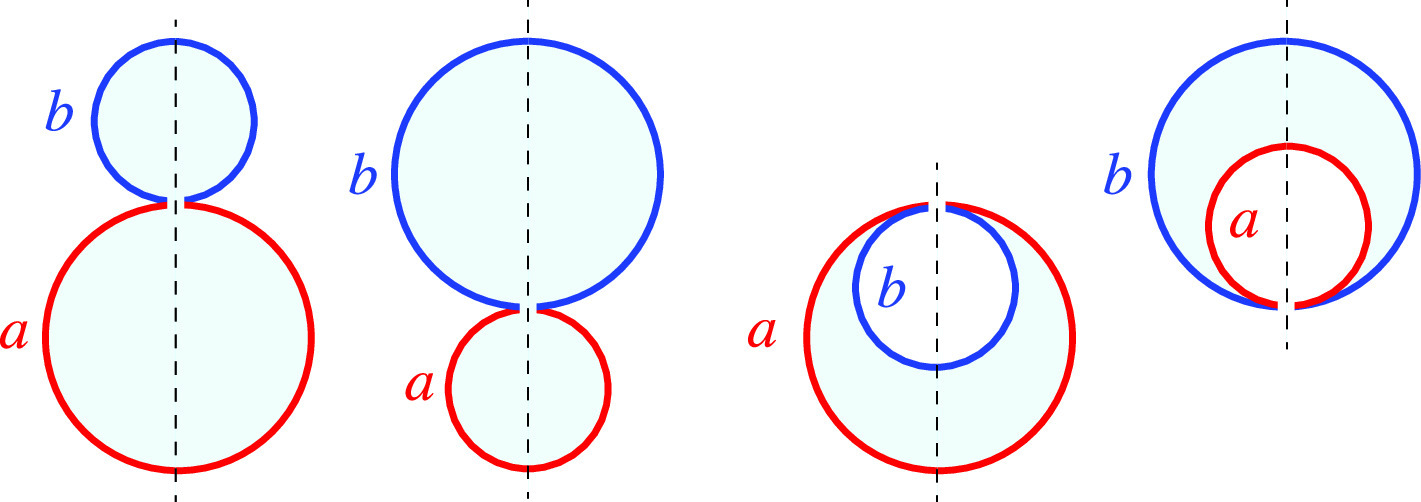https://doi.org/10.1140/epje/s10189-023-00399-z
Regular Article - Living Systems
Multispherical shapes of vesicles with intramembrane domains
Max Planck Institute of Colloids and Interfaces, Science Park Golm, 14424, Potsdam, Germany
Received:
26
September
2023
Accepted:
18
December
2023
Published online:
11
January
2024
Phase separation of biomembranes into two fluid phases, a and b, leads to the formation of vesicles with intramembrane a- and b-domains. These vesicles can attain multispherical shapes consisting of several spheres connected by closed membrane necks. Here, we study the morphological complexity of these multispheres using the theory of curvature elasticity. Vesicles with two domains form two-sphere shapes, consisting of one a- and one b-sphere, connected by a closed ab-neck. The necks’ effective mean curvature is used to distinguish positive from negative necks. Two-sphere shapes of two-domain vesicles can attain four different morphologies that are governed by two different stability conditions. The closed ab-necks are compressed by constriction forces which induce neck fission and vesicle division for large line tensions and/or large spontaneous curvatures. Multispherical shapes with one ab-neck and additional aa- and bb-necks involve several stability conditions, which act to reduce the stability regimes of the multispheres. Furthermore, vesicles with more than two domains form multispheres with more than one ab-neck. The multispherical shapes described here represent generalized constant-mean-curvature surfaces with up to four constant mean curvatures. These shapes are accessible to experimental studies using available methods for giant vesicles prepared from ternary lipid mixtures.
Contribution to the Festschrift in honor of Philip (Fyl) Pincus.
© The Author(s) 2024
 Open Access This article is licensed under a Creative Commons Attribution 4.0 International License, which permits use, sharing, adaptation, distribution and reproduction in any medium or format, as long as you give appropriate credit to the original author(s) and the source, provide a link to the Creative Commons licence, and indicate if changes were made. The images or other third party material in this article are included in the article’s Creative Commons licence, unless indicated otherwise in a credit line to the material. If material is not included in the article’s Creative Commons licence and your intended use is not permitted by statutory regulation or exceeds the permitted use, you will need to obtain permission directly from the copyright holder. To view a copy of this licence, visit http://creativecommons.org/licenses/by/4.0/.
Open Access This article is licensed under a Creative Commons Attribution 4.0 International License, which permits use, sharing, adaptation, distribution and reproduction in any medium or format, as long as you give appropriate credit to the original author(s) and the source, provide a link to the Creative Commons licence, and indicate if changes were made. The images or other third party material in this article are included in the article’s Creative Commons licence, unless indicated otherwise in a credit line to the material. If material is not included in the article’s Creative Commons licence and your intended use is not permitted by statutory regulation or exceeds the permitted use, you will need to obtain permission directly from the copyright holder. To view a copy of this licence, visit http://creativecommons.org/licenses/by/4.0/.





